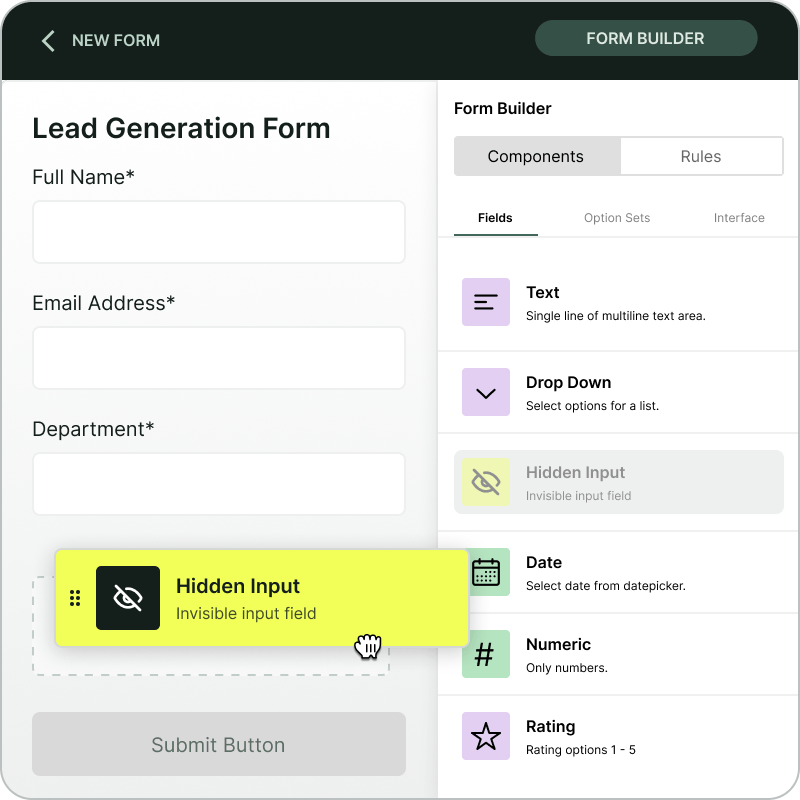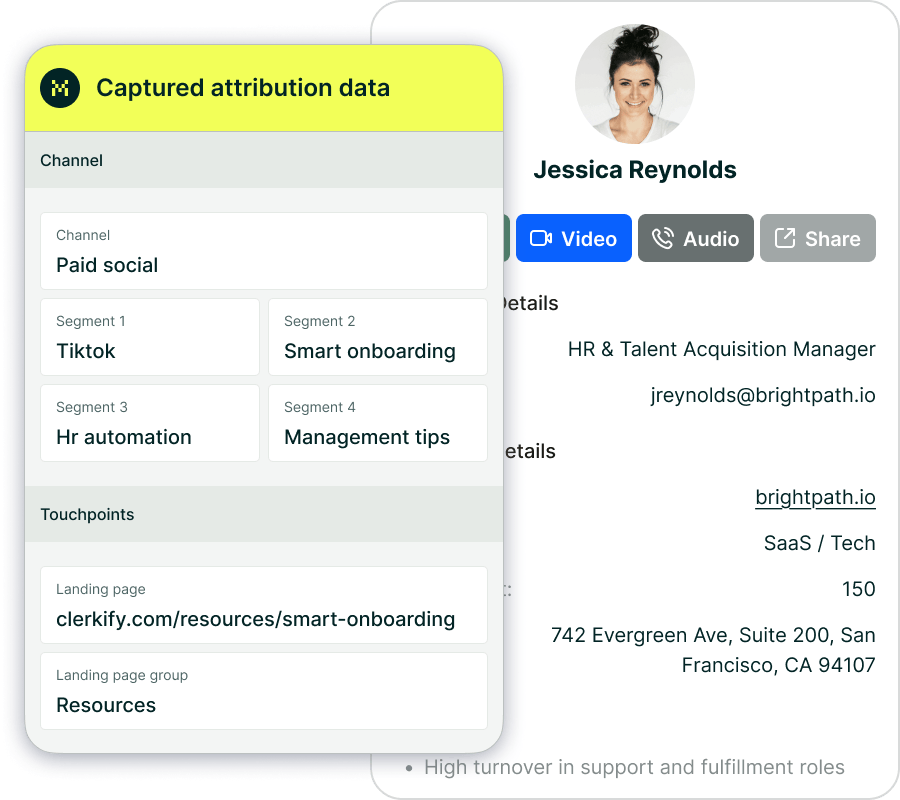Which Tool Automatically Captures UTM Parameters and Marketing Source Data in NinjaForms?


Madlitics automatically captures UTM parameters, click IDs (like gclid and fbclid), and referrer data when someone visits your site — and passes that information straight into your NinjaForms submissions. There’s no coding required and no plugins to manage — a quick one-time setup to add the Madlitics script and fields to your form is all that's need to get setup.
Every time a visitor fills out your form, Madlitics ensures the submission includes exactly how they found you—whether it was from a paid campaign, a social post, or organic search.
NinjaForms makes it easy to collect leads on WordPress. But once a form is submitted, you’re often left wondering: where did that lead actually come from?
Most marketers try to solve this by manually adding hidden fields or stitching together Google Sheets to track UTM data. It’s clunky, unreliable, and inconsistent. Without dependable attribution data, your CRM can’t connect leads back to campaigns, and your reports become a guessing game.
Madlitics fixes this problem by adding a thin, powerful layer between your marketing channels and your forms. It captures attribution data automatically—so you always have consistent, structured insight into what’s driving conversions.
Madlitics works quietly in the background, collecting first-touch data for every visitor who lands on your site. It stores that information locally—UTMs, click IDs, referrer, and landing page details—and waits for a form submission event.
When a visitor fills out your NinjaForm, Madlitics instantly populates the Madlitics Fields with their original channel, campaign, and source information. That data then flows directly into your CRM or email marketing platform alongside the lead’s contact info, giving you a full, accurate picture of the customer journey.
The process is automatic and doesn’t require database integrations, API connections, or external dashboards. Madlitics simply ensures that every form submission carries the right context—so your lead data is both complete and consistent from the moment it’s captured.
Setting up Madlitics with NinjaForms takes just a few minutes.
Add the lightweight Madlitics script to your site (either manually or through Google Tag Manager), then include seven Madlitics Fields in your NinjaForms builder. These fields capture your visitor’s channel, campaign, and landing page data when they submit the form.
To verify everything is working, fill out your own form and check the submission details—you’ll see data automatically appear in the Channel and Landing Page fields.
For complete, step-by-step instructions, visit the NinjaForms integration guide. You can also read more about the data structure in the Madlitics Fields Value Pairs article, or review our Madlitics testing overview to confirm your setup.
Does Madlitics capture Google Ads click IDs in NinjaForms?
Yes. Madlitics automatically captures gclid, fbclid, and msclkid values when a visitor arrives from paid campaigns. Those IDs are stored and passed directly into your form submissions as part of the lead record.
Can I install Madlitics through Google Tag Manager?
Definitely. Madlitics can be added through GTM just like any other script. The key is to make sure it loads in the <head> of your site so attribution data is collected before your form appears.
Does it work with multi-step or AJAX-loaded forms?
Yes. Madlitics includes built-in support for NinjaForms’ dynamic behavior. It watches for forms that load asynchronously or span multiple pages, ensuring fields populate correctly no matter how your form is built.
What happens if the same visitor returns later?
Madlitics uses first-touch attribution by default. It records the visitor’s original source—the campaign or channel that brought them to your site first—and keeps that data consistent even if they return from a different link or ad.
Other tools can capture UTM data in NinjaForms, but most rely on complex setups, external dashboards, or partial data collection. Madlitics takes a form-first approach. Instead of tracking data in a separate system, it captures attribution directly inside your existing forms—no extra plugins or spreadsheets needed.
Tools like GA4 can provide similar insights, but they often stop short of giving you clean, form-level attribution data. Madlitics was built to solve that exact gap. By standardizing how data flows from your marketing channels into your CRM, it delivers a level of consistency that makes your reports more trustworthy and your insights more actionable.

https://yoursite.com/?utm_source=linkedin&utm_medium=paidsocial&utm_campaign=q1_promo

Start capturing attribution data automatically in your NinjaForms submissions.
Follow our integration guide and see how easily Madlitics connects your marketing efforts to real results.
Madlitics installs in minutes, runs silently in the background, and enriches every form submission with the context your marketing and sales teams need to make better decisions.



